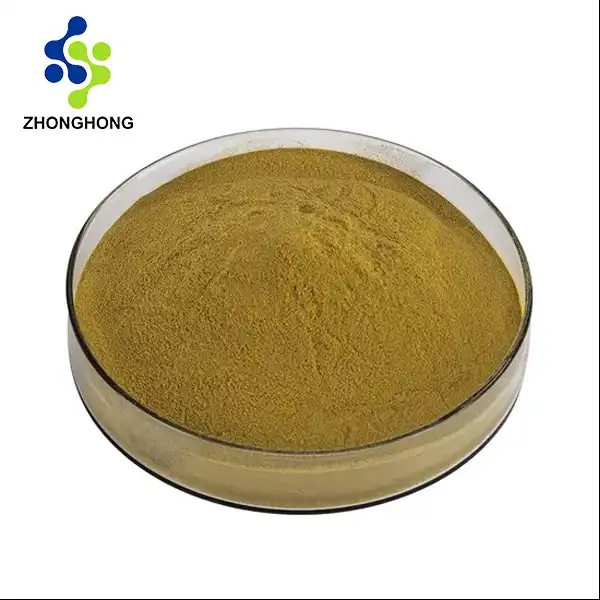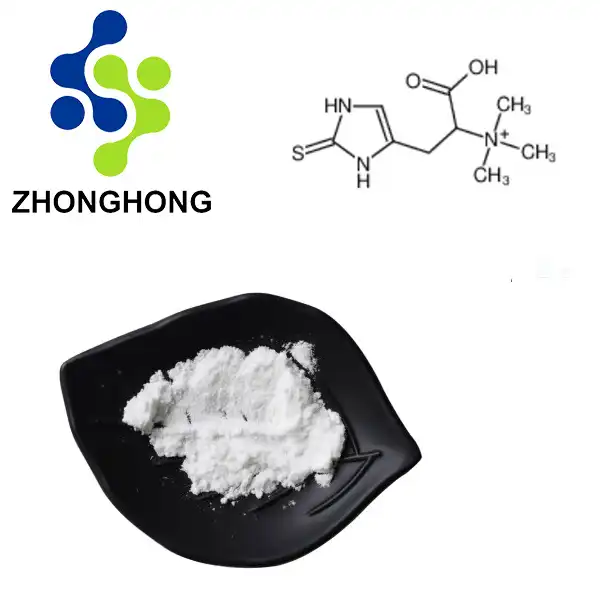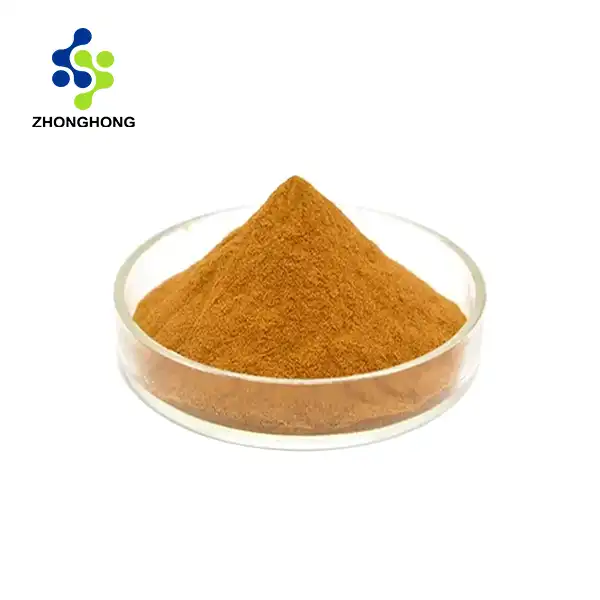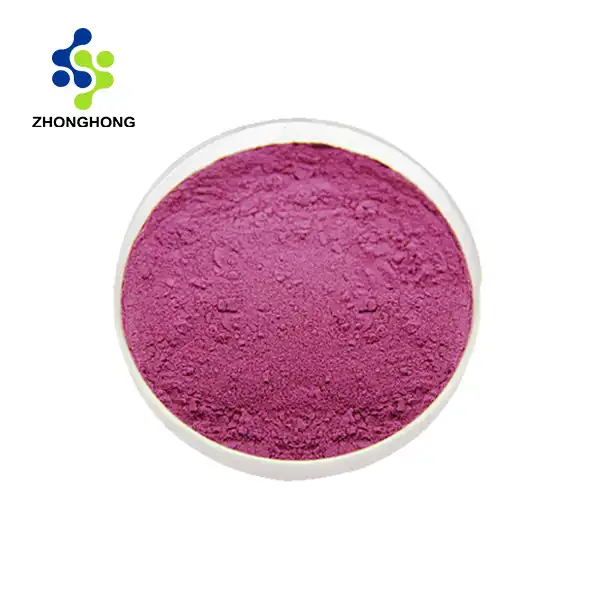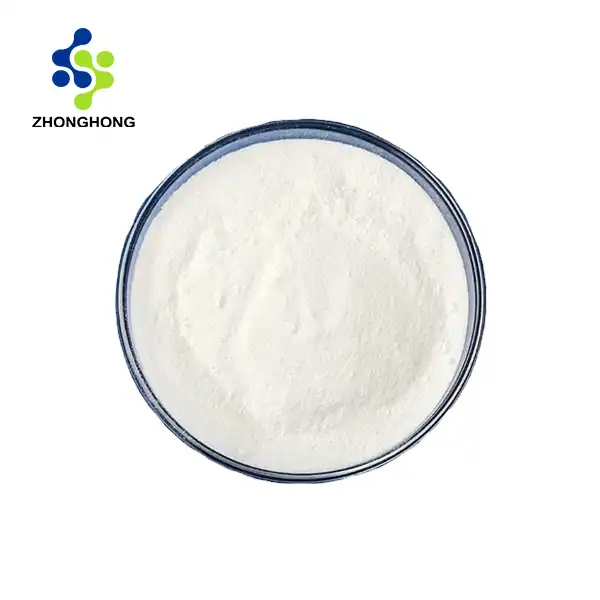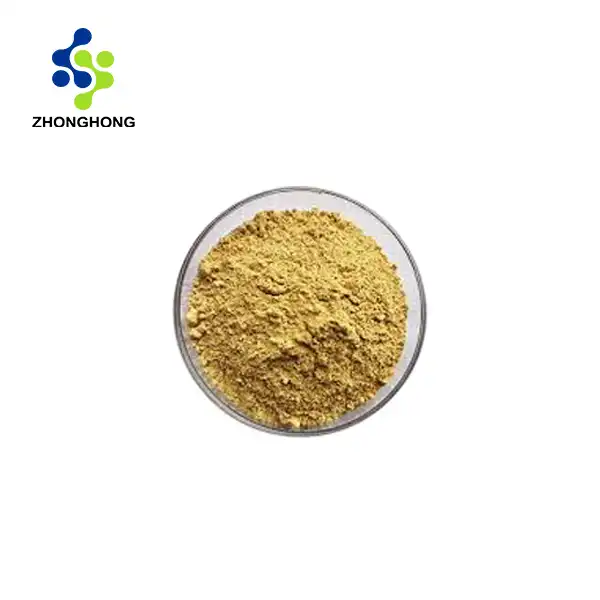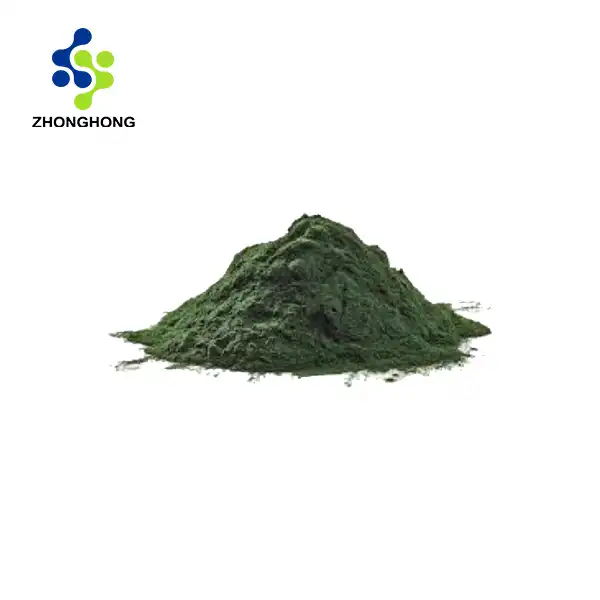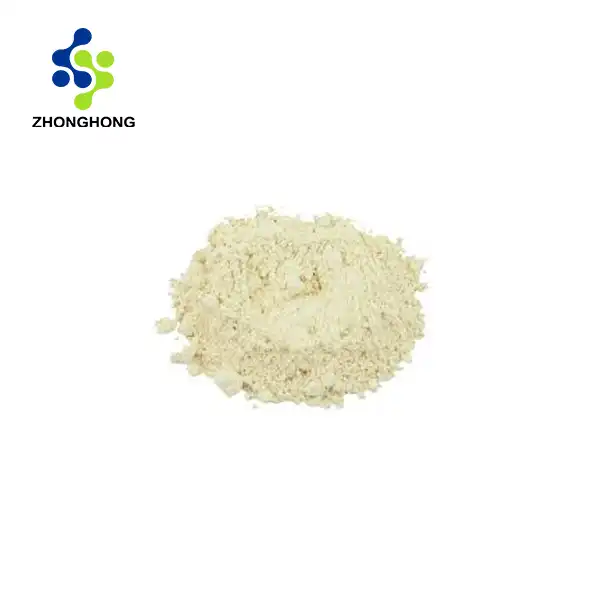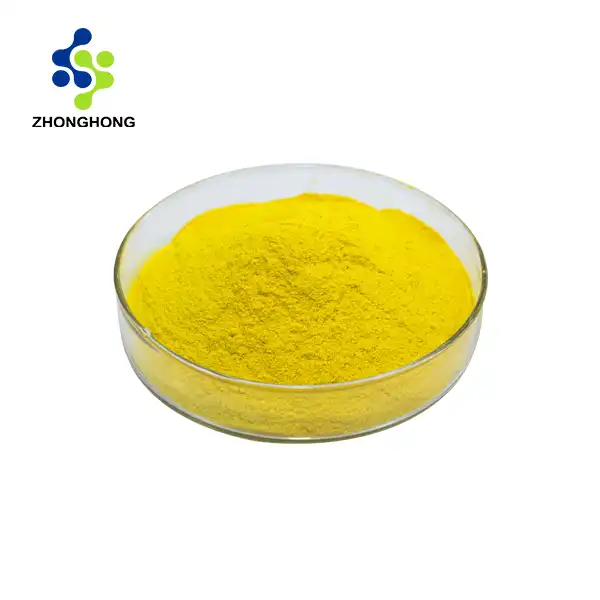English Name: Seaweed Polysaccharide
Botanical Source: Extracted from various species of seaweeds, such as brown algae (e.g., kelp), green algae, and red algae.
Specification
Active Ingredient: Polysaccharide content ≥ [X]% (HPLC or other suitable methods tested), typically ranging from 30% - 70% depending on the seaweed type and extraction process.
Appearance:It usually appears as a light brown to dark brown powder. Some forms may be slightly hygroscopic. In aqueous solution, it can form viscous liquids.
Lead time: 3 - 7 Working Days. This may be adjusted depending on order volume and production capacity.
Package
Packaging: 25kg/drum, with 27 drums/tray. The drums are made of food-grade or suitable materials to protect the product from moisture, light, and other environmental factors.
Main Market: European, North America, Asia etc. It has wide applications in multiple industries across these regions.
Applications Health Supplements:
As an antioxidant, it helps scavenge free radicals, protecting cells from oxidative damage. Some studies suggest potential immune-modulating effects, which could contribute to overall health and potentially aid in cancer prevention, though more research is needed. It may also assist in digestive health due to its prebiotic-like properties.
Cosmetics:
In anti-aging creams, it can form a moisturizing film on the skin, improving skin hydration and elasticity. In skin-soothing lotions, its gentle and hydrating nature helps calm irritated skin.
Food Industry:
It can act as a natural thickener and stabilizer, improving the texture of food products. In some cases, it may have a role as a natural preservative, inhibiting microbial growth. Added to functional beverages, it provides added health benefits and can enhance mouthfeel.
Seaweed Polysaccharide: Unveiling the Ocean's Hidden Treasure
1. Introduction
Shaanxi Zhonghong Investment Technology Co., Ltd. has firmly established itself as a powerhouse in the high-tech landscape, with a profound focus on chemistry, materials, and life sciences. As an integrated enterprise that combines agile R&D, collaborative innovation, integrated manufacturing, and global marketing, we have mastered the art of extracting and purifying nature's most valuable components. Our extensive product range encompasses a variety of standard plant extracts, and among them, Seaweed Polysaccharide stands out as a remarkable offering, sourced directly from the bountiful depths of the ocean.
2. Research Eminence
Our commitment to innovation knows no bounds. In collaboration with 5 leading universities, we have established joint laboratories that have been the breeding ground for over 20 patented technologies and a globally exclusive compound library. For Seaweed Polysaccharide, our research efforts have delved deep into understanding its complex chemical structures and biological activities. This knowledge has enabled us to optimize extraction methods, ensuring that we can unlock the full potential of this oceanic wonder, providing you with a product of the highest quality and efficacy.
3. State-of-the-Art Equipment Arsenal
At our state-of-the-art production facility, we are equipped with international cutting-edge detection systems such as high-performance liquid chromatography and superconducting nuclear magnetic resonance spectrometers. This advanced technology empowers us to achieve a purity standard that surpasses the industry norm by 20%. With such precision instrumentation, we meticulously monitor and control every step of the production process of Seaweed Polysaccharide, from the initial sourcing of seaweed to the final packaging, guaranteeing a consistent and potent product.
4. Global Footprint
With a vast network spanning over 30 countries across Asia, Europe, and the Americas, we have become the go-to partner for multinational pharmaceutical companies and research institutions. We take pride in offering bespoke raw material solutions. Whether it's for developing novel drugs, creating revolutionary cosmetics, or formulating high-quality health supplements, our Seaweed Polysaccharide can be tailored to meet specific requirements, making us a trusted source in the global market.
5. Product Specifications
| Project | Standard | Detection Method |
|---|---|---|
| Pesticide Residues | Maintained at levels far below the maximum residue limits set by international regulatory bodies. Individual pesticide residues are typically undetectable or below 0.01 ppm. | Gas Chromatography-Mass Spectrometry (GC-MS) for ultra-sensitive detection of trace pesticides. |
| Heavy Metals | Stringently controlled to meet the strictest global health and safety requirements. Levels of lead (Pb) < 0.1 ppm, mercury (Hg) < 0.01 ppm, cadmium (Cd) < 0.05 ppm, and other heavy metals are minimized. | Atomic Absorption Spectroscopy (AAS) for accurate quantification of heavy metal content. |
| Microbial Contamination | Total viable count < 100 CFU/g (colony-forming units per gram), absence of pathogenic bacteria such as Escherichia coli, Salmonella, Vibrio parahaemolyticus, and Listeria monocytogenes. | Standard microbiological plating techniques and polymerase chain reaction (PCR) for pathogen detection. |
6. Product Characteristics
Seaweed Polysaccharide is a complex carbohydrate derived from various species of seaweed. It presents as a fine, hygroscopic powder, often with a characteristic marine odor that can be minimized during further processing. Its unique molecular structure, composed of repeating sugar units, endows it with a plethora of beneficial properties. It is soluble in water, forming viscous solutions, and exhibits excellent film-forming and emulsifying capabilities, making it highly versatile for different formulations.
7. Production Process
The production of Seaweed Polysaccharide begins with the careful selection of high-quality seaweed sourced from sustainable oceanic habitats. These seaweeds are thoroughly cleaned to remove impurities, sand, and other debris. Next, an extraction process is employed, which may involve techniques like hot water extraction, enzymatic hydrolysis, or supercritical fluid extraction, depending on the desired properties of the final product. The extracted polysaccharide is then purified through multiple rounds of filtration, centrifugation, and chromatography to remove any remaining contaminants. Finally, it is dried and milled to obtain the desired powdered form, ready for packaging.
8. Usage Scenarios
Pharmaceutical Applications: In the pharmaceutical realm, Seaweed Polysaccharide shows great promise. It can be used as a drug delivery vehicle, thanks to its ability to form stable gels and encapsulate active pharmaceutical ingredients. It also exhibits immunomodulatory properties, potentially aiding in the treatment of autoimmune diseases and enhancing the body's immune response to infections.
Healthcare Supplements: As a dietary supplement, it is rich in dietary fiber and can support digestive health. It helps regulate bowel movements, promote a feeling of fullness, and may assist in managing blood sugar and cholesterol levels. Additionally, its antioxidant properties can combat oxidative stress, protecting cells from damage.
Cosmetics: In the beauty industry, Seaweed Polysaccharide is a sought-after ingredient. When incorporated into creams, lotions, and serums, it can hydrate and moisturize the skin, improving skin elasticity and reducing the appearance of fine lines and wrinkles. It can also form a protective barrier on the skin, shielding it from environmental pollutants.
9. Physiological Efficacy for Different Groups
For Athletes: The polysaccharide can aid in post-exercise recovery by reducing inflammation and oxidative stress. Its ability to support the immune system can also help athletes stay healthy during intense training periods, minimizing the risk of illness.
Elderly Population: It can contribute to overall health and well-being. By improving digestive function, it can address common age-related issues. Its antioxidant and immunomodulatory properties can also help protect against age-related diseases and boost the immune system, which tends to weaken with age.
Beauty Enthusiasts: Regular use in skincare products can result in visibly smoother, more hydrated skin. It can enhance the complexion, giving a youthful and radiant glow, and help maintain skin health over time.
10. Quality Control
We have implemented a comprehensive and uncompromising quality control regime that oversees every aspect of production. From the initial inspection of raw materials to the final product testing, each batch of Seaweed Polysaccharide undergoes multiple layers of scrutiny. This includes chemical analysis, microbiological assays, and functional testing to ensure it complies with our high standards of quality and safety.
11. Use Tutorial
In pharmaceutical formulations, follow the prescribed dosage and administration instructions provided by medical professionals. For healthcare supplements, take as directed on the product label. In cosmetics, blend it into creams or lotions according to the manufacturer's instructions, usually in small percentages (0.5% - 5% depending on the product) to achieve the desired effect.
12. Packaging and Shipping
Our Seaweed Polysaccharide is packaged in light-resistant, sealed containers to preserve its stability and potency. We offer various packaging sizes to cater to different customer needs. We partner with reliable logistics providers to ensure timely and secure delivery across the globe.
13. Samples and Ordering
Interested in exploring the benefits of our Seaweed Polysaccharide? Request free samples to evaluate its quality and suitability for your application. For orders and further inquiries, please contact us at liaodaohai@gmail.com.
14. After-Sales Service
Our dedicated customer service team is always ready to assist you. Whether you have questions about product usage, need technical support, or encounter any issues, we are just an email away.
15. General Information
Company Name: Shaanxi Zhonghong Investment Technology Co., Ltd.
Years of Experience: 27 years of expertise in the plant extract industry.
16. Qualifications and Certifications
which attest to our commitment to quality, safety, and compliance in the production and distribution of Seaweed Polysaccharide.
17. FAQ
Q: Can Seaweed Polysaccharide be used in combination with other supplements? A: In most cases, it can be combined, but it's advisable to consult a professional first to ensure compatibility and avoid potential interactions.
Q: How long does it take to see the effects of Seaweed Polysaccharide on the skin? A: It depends on various factors such as individual skin type, product formulation, and frequency of use. Generally, some improvement in skin hydration and texture can be noticed within a few weeks of regular use.
18. References
A study published in the Journal of Applied Phycology titled "Biological activities and potential applications of seaweed polysaccharides" provided comprehensive insights into the properties and uses of seaweed polysaccharides [1].
Research findings from the International Journal of Cosmetic Science on the skin benefits of seaweed polysaccharides have informed our understanding of its role in the beauty industry [2].
[1] Wang, J., Zhang, Q., & Li, P. (2016). Biological activities and potential applications of seaweed polysaccharides. Journal of Applied Phycology, 28(3), 1711-1721.
[2] Choi, S. Y., & Bae, Y. S. (2009). Role of seaweed polysaccharides in skin health. International Journal of Cosmetic Science, 31(2), 103-112.
Discover the potential of Seaweed Polysaccharide with us. Contact us today and take the first step towards integrating this oceanic treasure into your products or personal health regimen.
_1728976869676.webp)
